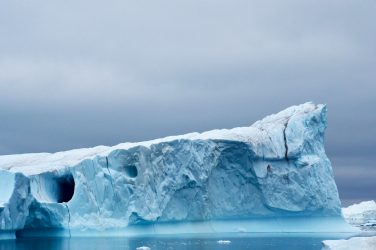Fragments of microplastics collected in the Pyrenees have been found in Africa and North America, according to a French study.
Microplastics are everywhere, from the tip of Everest to the bottom of the Mariana Trenches, from the Arctic to the alpine glaciers. Even at the edge of the troposphere, where the air currents allow the plastic fragments to cover enormous distances.
These fragments have a size of fewer than 5 millimeters and are mainly preserved from packaging dispersed in the environment. Indeed, the origin of microplastics is mainly to be found in packaging, clothing, and particles released by vehicles and are repeatedly found in the air, soil, and water.
Scientists from the Centre National de la recherche scientifique (Cnrs) have found several at a height of 2,877 meters above sea level, on the peak of the Pic du Midi de Bigorre, in the Pyrenees.
We breathe microplastic. This is the topic just mentioned by the CNRS research concerns. There is the risk that these plastic particles could be breathed by humans. On this, other authors have tried to analyze the connection between microplastics and virus transport, such as Sars-Cov-2.
The researchers took into consideration the possible link between the airborne microplastics coming from waste contaminated by Sars-Cov-2 and the transmission of the virus itself.
Furthermore, the microplastics transported by air could be found at distances of nearly 100 kilometers from the source. And the virus stays on plastic surfaces for at least 72 hours.
The observatory located on Pic du Midi – in the Pyrenees – is considered a “clean station”, which is a station where the influence of the climate and the environment is limited.
Through a pump installed at high altitude, the researchers analyzed 10,000 cubic meters of air every week, between June and October 2017, finding several fragments of microplastics. By studying the trajectory of these small particles, they have been found in North Africa and North America.
«Once we reach the troposphere, it is as if these fragments are traveling a highway at great speed», explained Steve Allen, one of the authors of the research.
Not only that, but the microplastics followed by scientists also ended up in the Mediterranean Sea and the Atlantic Ocean. «Microplastics do not go to the bottom but are transported in the air, in an indefinite cycle», according to researchers.
All this happens on the eve of a special year for the mountains. In fact, 2022 has been proclaimed the International Year of Sustainable Mountain Development by the United Nations. The proposal came from Kyrgyzstan and the approval vote was unanimous.
«The United Nations organization, through the celebration of this theme, intends to raise awareness of the importance of sustainable mountain development, as well as of conservation and sustainable use of mountain ecosystems», reads the press release released by the Kyrgyz Ministry of Foreign Affairs.
The choice to propose 2022 as the international year dedicated to sustainable development at high altitude is not accidental: exactly 20 years have passed since 2002 that was recognized as the international year of the mountains.
The calendar of celebrations is not yet official but the hope is that the topic of microplastics is present, as it is very important that something is done on this front. The mountain ecosystem, as shown by research, is directly linked to the marine one. Defending them means defending ourselves.









Show Comments